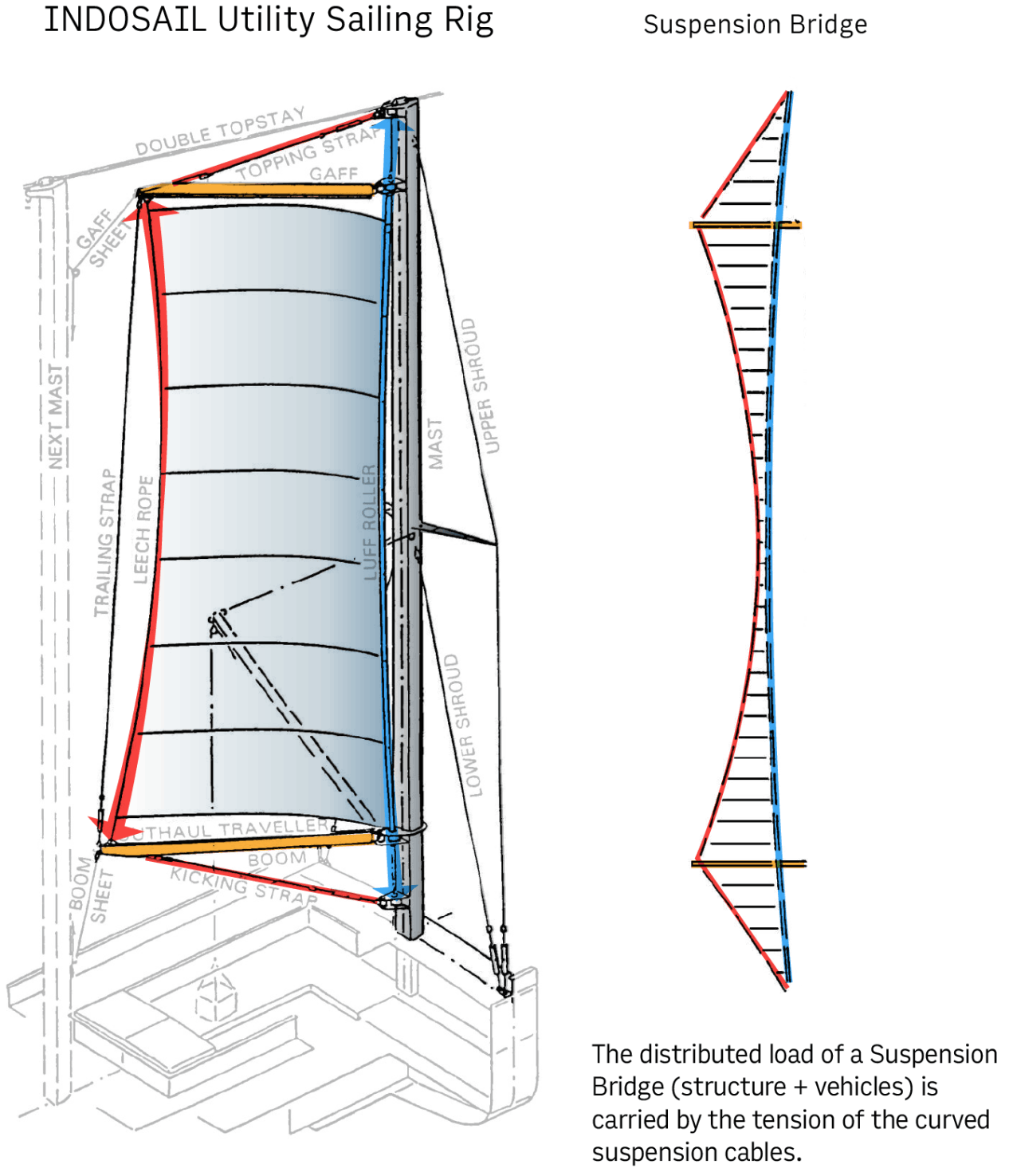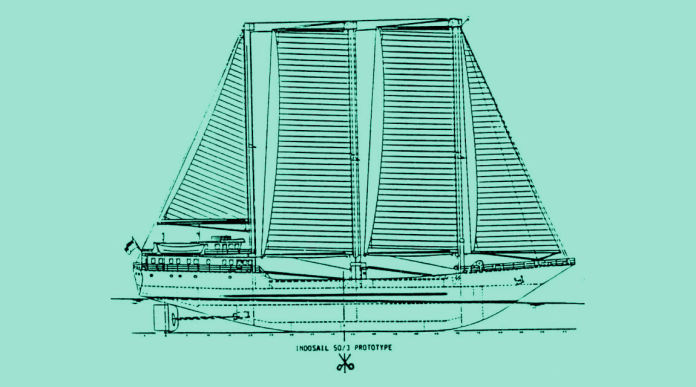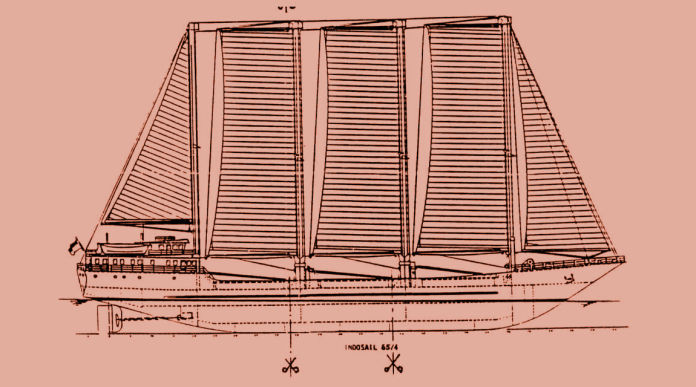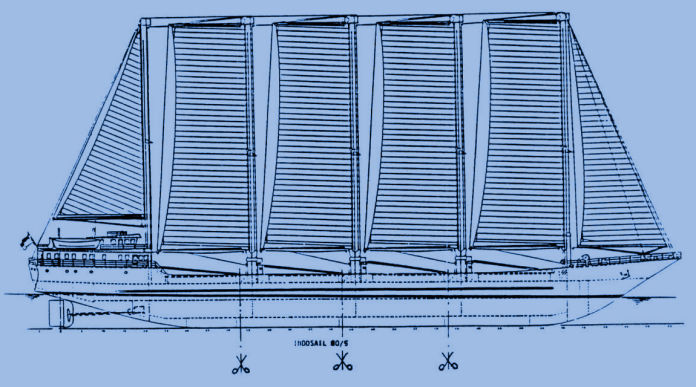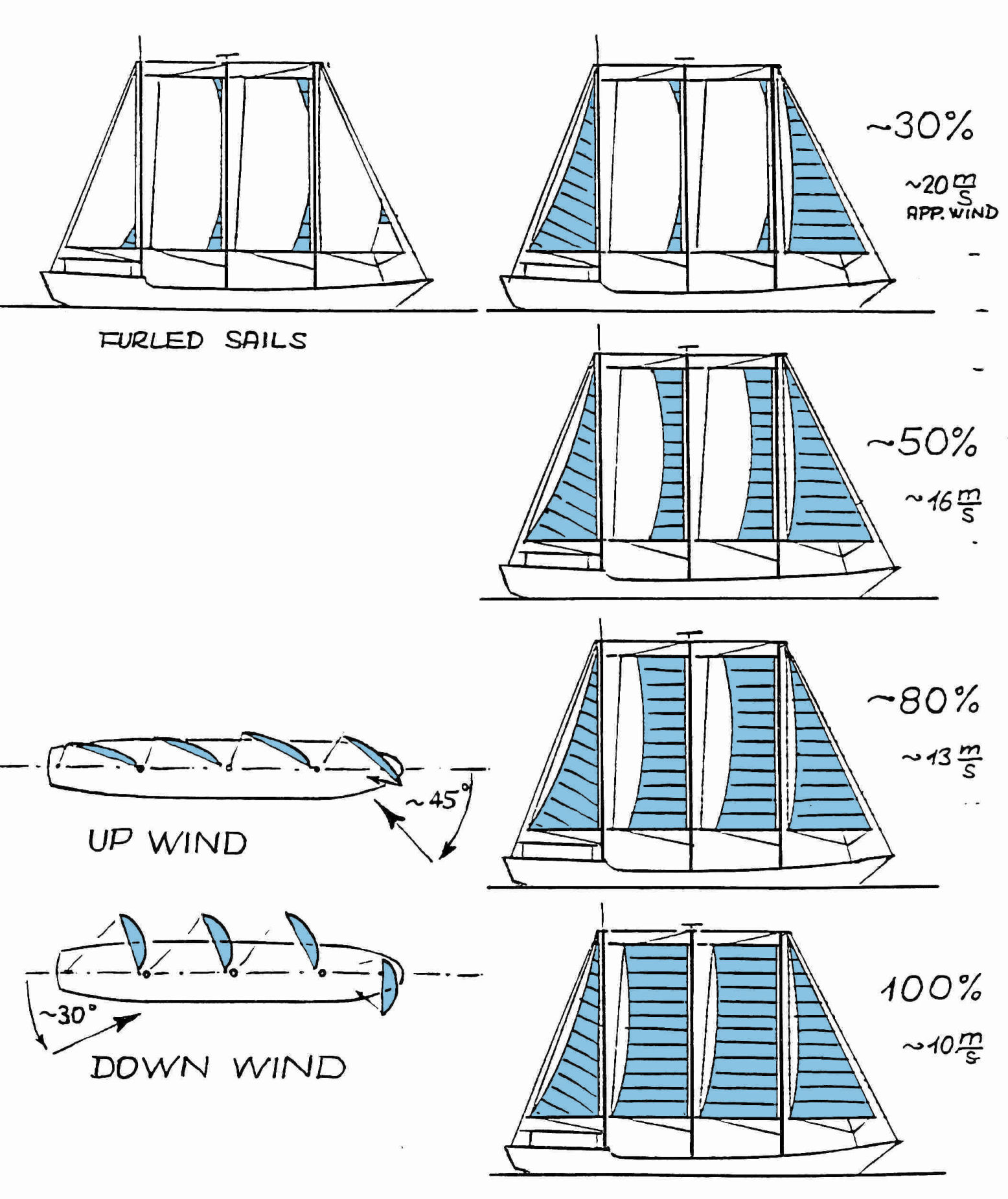Efficiency
All sails are made of soft UV-resistant cloth. They are of flat
cut with a hollow curved leech seam. The sails under wind load
are suspended by a strong, curved leech rope similar to a
'suspension bridge'.
In a multi mast sailing rig—as with an aircraft wing in the start or landing configuration—the optimum adjustment of the sail- or wing elements to the local
flow conditions is resulting in a fairly open sheeting of the jib
and a progressively closer sheeting of the following sails, with
the mizzen sheeted closest. The purpose is to force the wind flow—step by step—to turn its direction closer to the midship line, for
optimum propulsion thrust and even distribution of the
contributions of the sail elements.
A fore-and-aft mainsail attached to the mast or a luff roller
close to the mast is suffering from disturbed flow on its most
critical leading edge. The gap between mast and roller is
marginally improving the flow but a considerable improvement is
found from the slipstream of a jib sail in front. Thus the
propulsive effect of the combination is much more than the sum
of the effects of the individual sails.
Consequently, to open the gaff sails only is not an efficient
configuration. It is suggested instead, to open the jib and
mizzen sails first and to open the gaff fore and mainsails then
to a degree compatible with the course and wind conditions.
With increasing wind speeds, the gaff sails should be reefed
progressively with the jib and mizzen sails still full.
